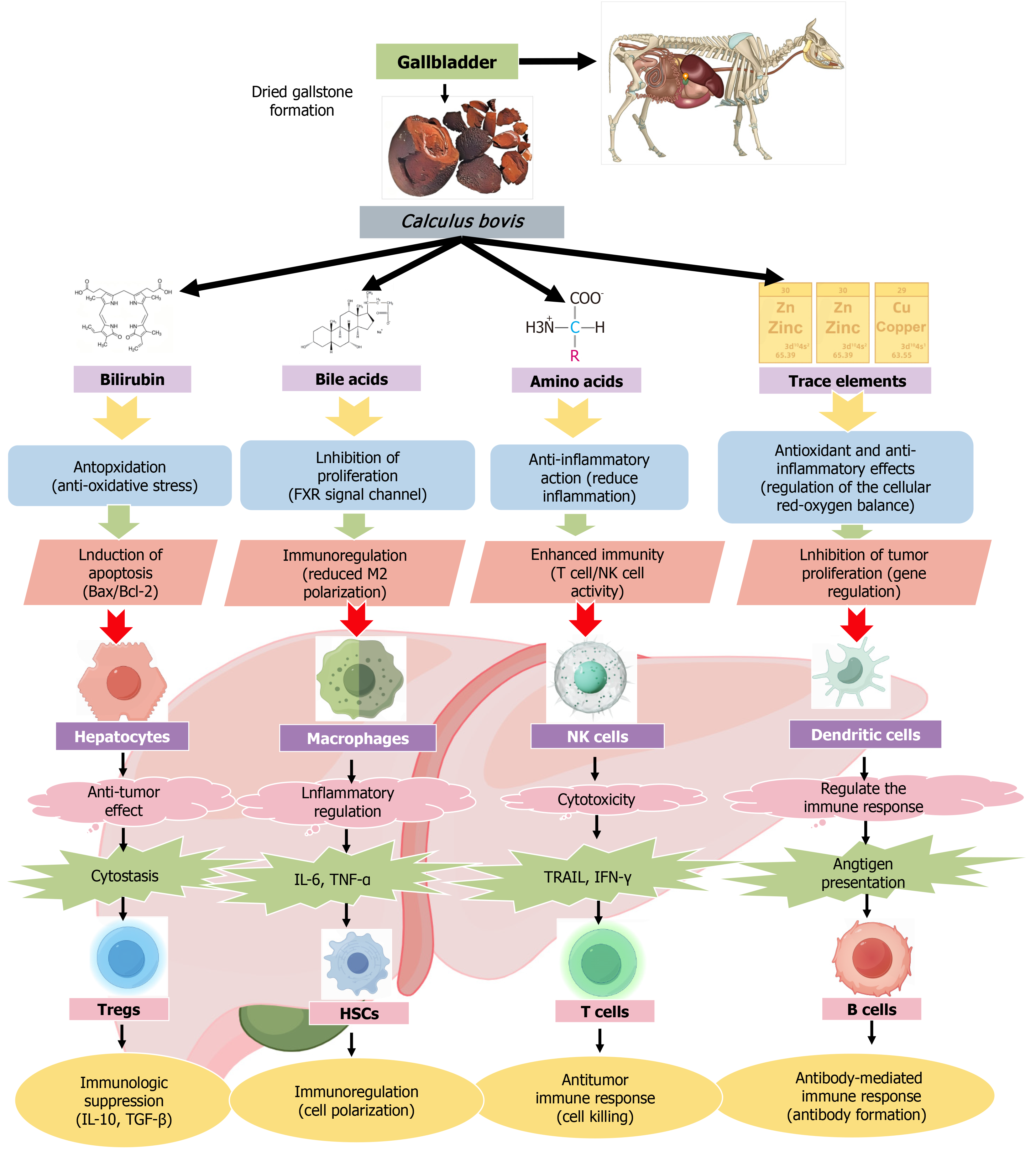Copyright
©The Author(s) 2025.
World J Gastroenterol. Feb 14, 2025; 31(6): 99750
Published online Feb 14, 2025. doi: 10.3748/wjg.v31.i6.99750
Published online Feb 14, 2025. doi: 10.3748/wjg.v31.i6.99750
Figure 1 Major components of Calculus bovis and their mechanisms of action on the liver cancer immune microenvironment.
Calculus bovis, which is formed from dried gallstones of cattle, contains key components such as bilirubin, bile acids, amino acids, and trace elements (zinc, copper, and iron). Bilirubin has antioxidative effects by reducing oxidative stress and inducing apoptosis in hepatocytes, thus exerting an antitumour effect. Bile acids inhibit cell proliferation through the farnesoid X receptor signalling channel, leading to immunoregulation by reducing M2 polarization of macrophages and regulating inflammation through the cytokines interleukin 6 and tumour necrosis factor-alpha. Amino acids have anti-inflammatory effects and enhance immunity by increasing T-cell and natural killer cell activity, contributing to cytotoxicity and the anti-tumour immune response. Trace elements have antioxidant and anti-inflammatory effects by regulating the cellular red-oxygen balance, inhibiting tumour proliferation through gene regulation, and modulating immune responses via antigen presentation and antibody formation by dendritic cells and B cells. FXR: Farnesoid X receptor; Bax: B-cell lymphoma 2-associated X protein; Bcl-2: B-cell lymphoma 2; NK: Natural killer; IL-6: Interleukin 6; TNF-α: Tumour necrosis factor-alpha; TRAIL: Tumour necrosis factor-related apoptosis-inducing ligand; IFN-γ: Interferon-gamma; Tregs: Regulatory T cells; HSCs: Hepatic stellate cells; TGF: Transforming growth factor-beta.
- Citation: Wang SY, Wang KJ. Reevaluating Calculus bovis: Modulating the liver cancer immune microenvironment via the Wnt/β-catenin pathway. World J Gastroenterol 2025; 31(6): 99750
- URL: https://www.wjgnet.com/1007-9327/full/v31/i6/99750.htm
- DOI: https://dx.doi.org/10.3748/wjg.v31.i6.99750









